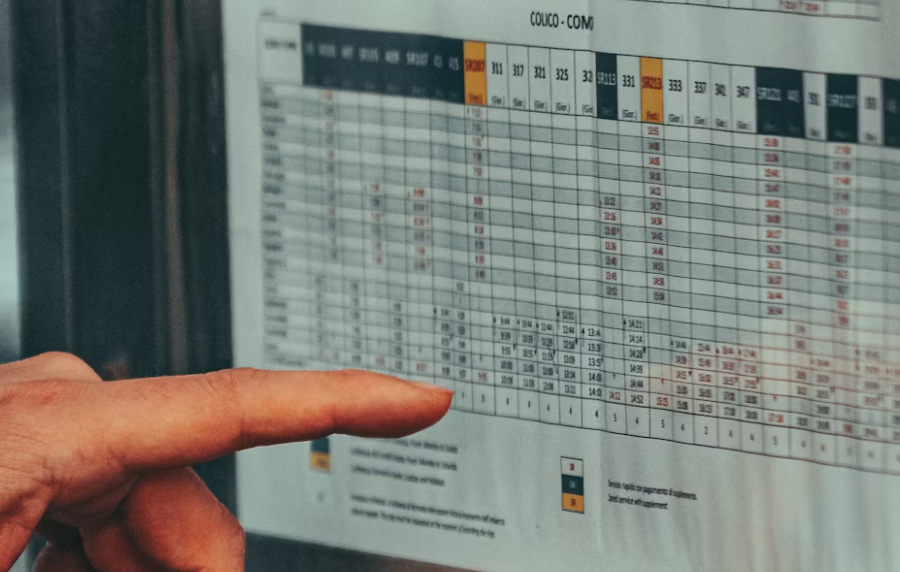Table of Contents
Get Custom eCommerce Fulfillment Service
Book a Meeting
How Long Should You Run Your Crowdfunding Campaign?
Time: Sep 13,2024 Author: SFC Source: www.sendfromchina.com
When planning a crowdfunding campaign, one of the critical questions that often comes up is: how long should it last? While many people think the longer the campaign, the more money they will raise, this is not always the case. Balancing urgency with exposure is vital in determining the optimal length of your campaign.
This guide will walk you through understanding how to set the right duration for your campaign to maximize success and avoid common pitfalls.

1. Timeline of a Crowdfunding Campaign
Every crowdfunding campaign generally follows a predictable timeline, split into three primary phases:
1.1 Pre-Launch Phase
Pre-launch is where the groundwork is laid. You need to engage your community, build anticipation, and prepare your content. It’s about creating buzz and aligning your early backers. For most successful campaigns, the pre-launch phase can take weeks or even months.
1.2 Live Campaign Phase
It is when the actual funding occurs. Your product or cause is now public, and this is where potential backers can support you. The excitement is highest at the beginning of this phase, with most backers contributing early on.
1.3 Post-Campaign Fulfillment
Once the campaign is over, this phase focuses on delivering on your promises. Whether it’s shipping products or fulfilling services, the post-campaign stage is just as important for long-term success.
The Crowdfunding Surge Pattern
In many campaigns, there’s a noticeable spike in pledges at the beginning and the end of the campaign. The surge happens because the initial excitement drives early backers, and the urgency at the campaign’s close motivates late backers. Understanding this surge can help you strategically time your campaign.
2. What Is the Optimal Length of a Crowdfunding Campaign

The most successful crowdfunding campaigns are often those that maintain a balance between momentum and urgency. While many campaigns can last up to 60 days, the sweet spot tends to fall between 30 and 40 days.
Kickstarter Campaigns
The average Kickstarter campaign lasts around 30 days, according to Kickstarter statistics. The time frame strikes a balance between allowing enough exposure to potential backers and avoiding campaign fatigue.
Indiegogo Campaigns
Indiegogo offers slightly longer campaigns, often up to 60 days. However, research has shown that longer campaigns don’t necessarily result in more funds raised. In fact, many of the most successful campaigns conclude within 40 days.
The Case for 30-40 Days
A 30-day campaign is long enough to gather momentum but short enough to create a sense of urgency. Campaigns that extend past this time frame often see a drop in engagement during the middle of the campaign. A well-planned campaign should capitalize on the natural surges at the beginning and end of the campaign.
3. Factors Affecting the Length of a Crowdfunding Campaign

The length of a crowdfunding campaign is influenced by several factors, including:
3.1 Nature of the Project
The type of project you’re running can have a significant impact on the ideal campaign length:
Technology Products
Typically, backers of tech products expect to see detailed specs and proof of functionality. These campaigns often need a longer time to convince potential backers due to the higher price point and complexity.
Creative Campaigns (Books, Films, Music)
These often benefit from shorter campaigns, especially when there is an engaged community ready to back the project.
3.2 Funding Goal
A higher funding goal generally requires a longer crowdfunding campaign to allow more time for attracting backers and reaching the target, as it typically takes more effort and visibility to raise larger amounts. Lower funding goals can allow for shorter campaigns, creating urgency and encouraging quick contributions. However, shorter campaigns with high goals risk missing the target if backers feel there isn’t enough time to build trust and momentum. Campaign length is often adjusted based on the perceived difficulty of reaching the goal.
3.3 Target Audience
Understanding the behavior of your target audience is essential. If your audience is highly engaged and ready to take action, a shorter campaign may be sufficient. However, if you are still building awareness, a longer campaign might be necessary to nurture interest.
3.4 Marketing Strategy
How robust is your marketing plan? A highly organized and aggressive marketing campaign can make a shorter campaign just as effective as a longer one. Campaigns with viral elements or significant press coverage can often wrap up sooner.
4. Long and Short Crowdfunding Campaign: Pros and Cons

Here are the pros and cons of both long and short crowdfunding campaigns:
Pros and Cons of Short Campaigns (15-30 days)
Pros:- Creates urgency, prompting faster action.
- Easier to maintain excitement and momentum.
- Ideal for campaigns with an engaged, pre-existing audience.
Cons:
- Less time to reach a broader audience.
- Risk of leaving potential backers out if they miss the window.
Pros and Cons of Long Campaigns (40-60 days)
Pros:- More time to nurture leads and expand your reach.
- Greater potential for media coverage over an extended period.
Cons:
- Campaign fatigue: engagement often drops in the middle.
- Prolonged timelines can lead to a loss of momentum and excitement.
5. How Campaign Length Affecting Crowdfunding Success

The length of a crowdfunding campaign plays a crucial role in its success, impacting the ability to meet funding goals and maintain engagement. The right campaign length balances between generating momentum and keeping backers engaged without losing urgency or focus. Here’s how campaign length affects success:
Short Campaigns
Short campaigns, typically lasting 30 days or less, often create a sense of urgency that encourages backers to act quickly. The urgency can lead to a strong early push, which is vital for gaining visibility on crowdfunding platforms. Campaigns that gain traction early tend to benefit from platform algorithms, further increasing their exposure. Additionally, shorter campaigns are easier to maintain in terms of energy, resources, and communication.
However, the challenge lies in building sufficient awareness and momentum before the campaign begins, as a lack of early activity can lead to failure due to the limited time to recover. Pre-launch marketing is essential for short campaigns to succeed.
However, the challenge lies in building sufficient awareness and momentum before the campaign begins, as a lack of early activity can lead to failure due to the limited time to recover. Pre-launch marketing is essential for short campaigns to succeed.
Long Campaigns
Long campaigns, typically lasting 60 days or more, provide more time to engage with potential backers, build trust, and allow a wider audience to discover the project. They are particularly beneficial for more complex projects that need time to educate backers or for those that start slowly. Longer campaigns also allow for ongoing marketing efforts, partnerships, and press coverage to accumulate, leading to steady growth over time.
However, the downside is that long campaigns can suffer from a loss of urgency, causing potential backers to delay contributions. Backer fatigue can set in, and keeping momentum and excitement high becomes challenging. To succeed, long campaigns must carefully manage communication and engagement to avoid losing steam.
However, the downside is that long campaigns can suffer from a loss of urgency, causing potential backers to delay contributions. Backer fatigue can set in, and keeping momentum and excitement high becomes challenging. To succeed, long campaigns must carefully manage communication and engagement to avoid losing steam.
Optimal Length
Most successful campaigns tend to strike a balance, often lasting around 30-45 days. The duration provides enough time to build awareness and engage backers without dragging on too long, allowing for a balance between urgency and sustained effort. The key to success lies in creating a strong pre-launch strategy and maintaining a consistent level of engagement throughout the campaign.
6. Strategy For Setting Your Crowdfunding Campaign Length

Setting the right length for a crowdfunding campaign is a strategic decision that balances the need for urgency with the time required to build momentum and meet funding goals. Here are key strategies to consider when determining the optimal campaign length:
Define Clear Goals Early On
Before determining the length of your campaign, define your goals. Are you aiming for a quick infusion of cash, or do you need a more extended period to build support? Clarity in your objectives will guide your decision.
Analyze Similar Campaigns
Look at other campaigns in your industry. How long did they run, and how much did they raise? Study both successes and failures. For example, if you’re launching a tech gadget, review other tech campaigns’ lengths on platforms like Kickstarter or Indiegogo to set realistic expectations.
Leverage Pre-Launch Activity
Pre-launch activities like email lists, social media buzz, and community engagement can significantly affect how long your campaign needs to be. If you’ve built a highly engaged community during pre-launch, a shorter campaign will suffice. Conversely, a longer campaign may be necessary if you still need to drum up awareness.
Test and Adjust
Some crowdfunding platforms allow you to extend your campaign. Keep this option in mind, but also ensure that you aren’t relying on extensions as part of your initial strategy. The ideal situation is to have a focused, well-executed campaign that doesn’t need extra time to reach its goals.
7. FAQs
1. How long should a typical crowdfunding campaign last?
The average crowdfunding campaign lasts between 30-40 days. This provides enough time to gather momentum without leading to backer fatigue.
2. Can I extend my campaign if I haven’t met my funding goal?
Yes, many platforms allow you to extend your campaign. However, it’s best to plan your timeline carefully to avoid relying on an extension.
3. Does a longer campaign mean more funds raised?
Not necessarily. While a longer campaign gives you more time to attract backers, it can also lead to a drop in excitement and engagement. A well-timed, shorter campaign may be more effective.
4. What is the ideal pre-launch period for a crowdfunding campaign?
The pre-launch period can vary, but a period of 2-3 months is typically recommended to build anticipation and generate initial interest.
5. Should I run a longer campaign if I am launching a high-ticket product?
While higher-priced products often require more trust and time to convince backers, an extended campaign may not always be the answer. Focus on building trust pre-launch instead.
 Post Views:5791
Post Views:5791
Copyright statement: The copyright of this article belongs to the original author. Please indicate the source for reprinting.
Previous Post
What Determines Shipping Costs? A Comprehensive Guide
Next Post
TAGS
Hot Research
Recent News
Get Custom eCommerce Fulfillment Service
Book a Meeting
Get a Custom China Fulfillment Solution with FREE Storage for 30 Days
 Want to know about our services, fees or receive a custom quote?
Want to know about our services, fees or receive a custom quote?
 Please fill out the form on the right and we will get back to you within a business day.
Please fill out the form on the right and we will get back to you within a business day.
 The more information you provide, the better our initial response
will be.
The more information you provide, the better our initial response
will be.





 TAGS:
TAGS: